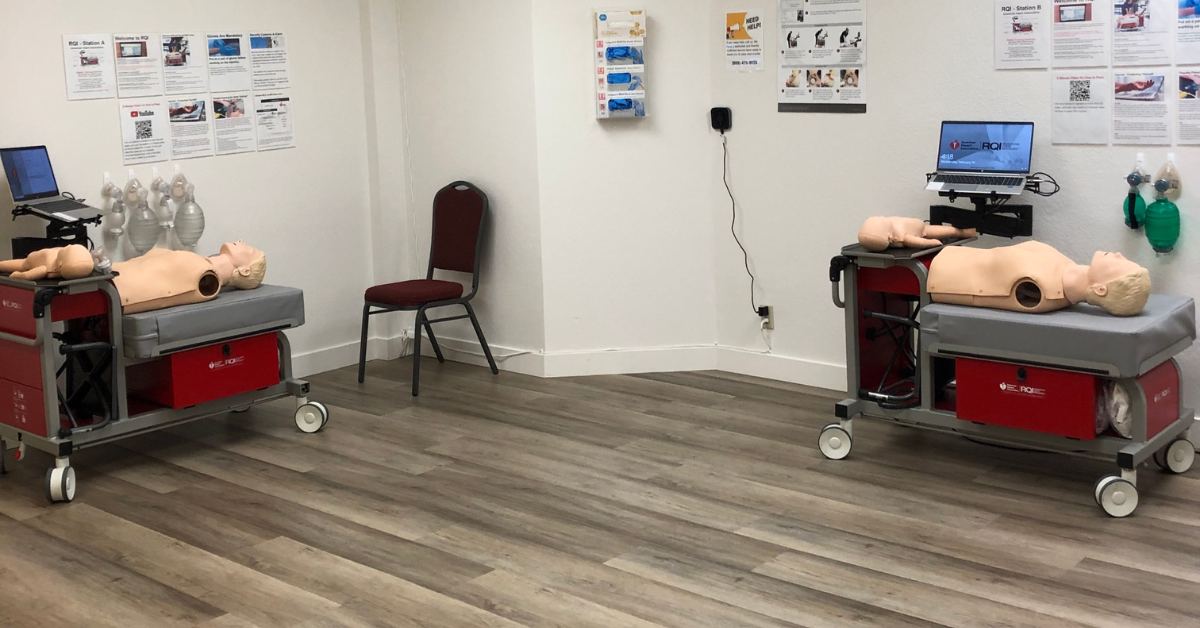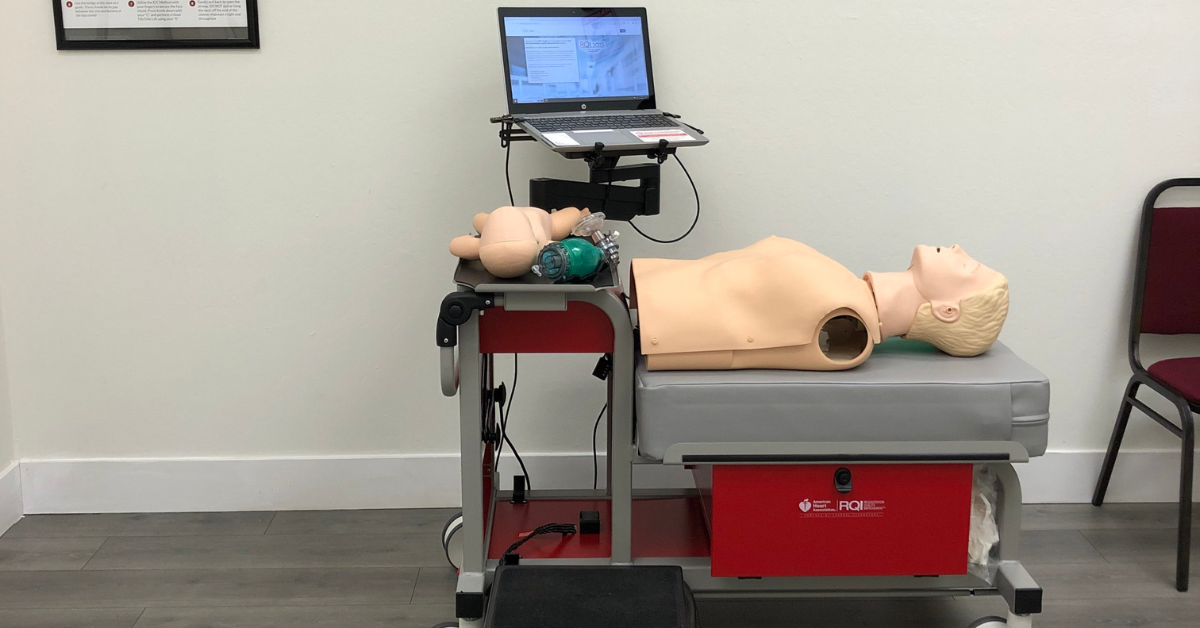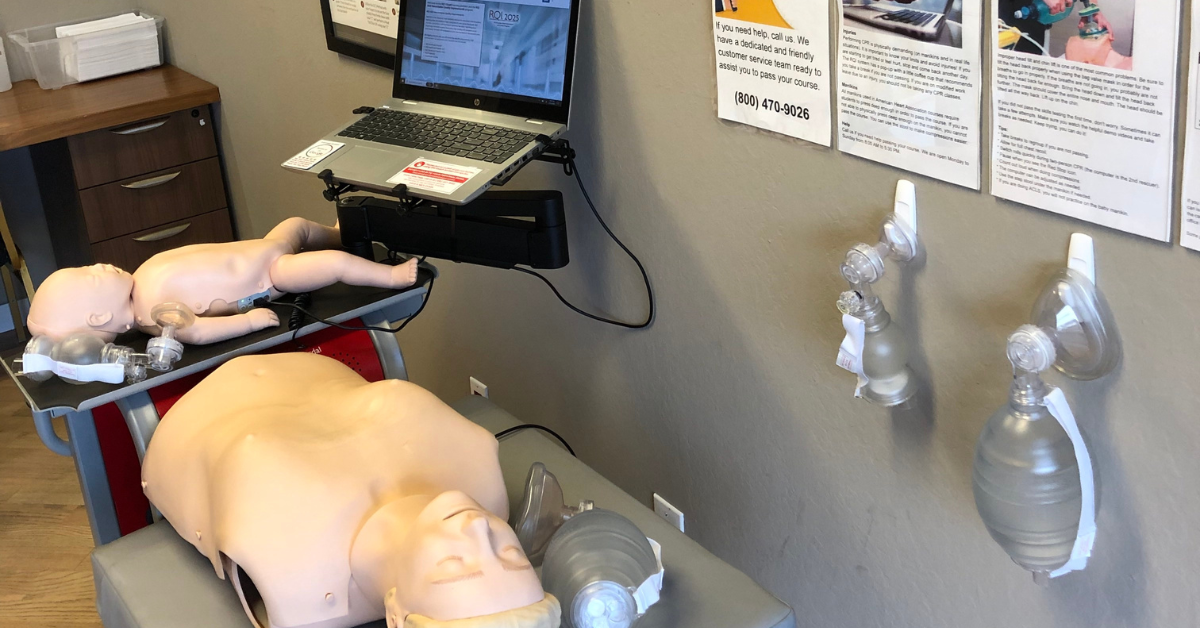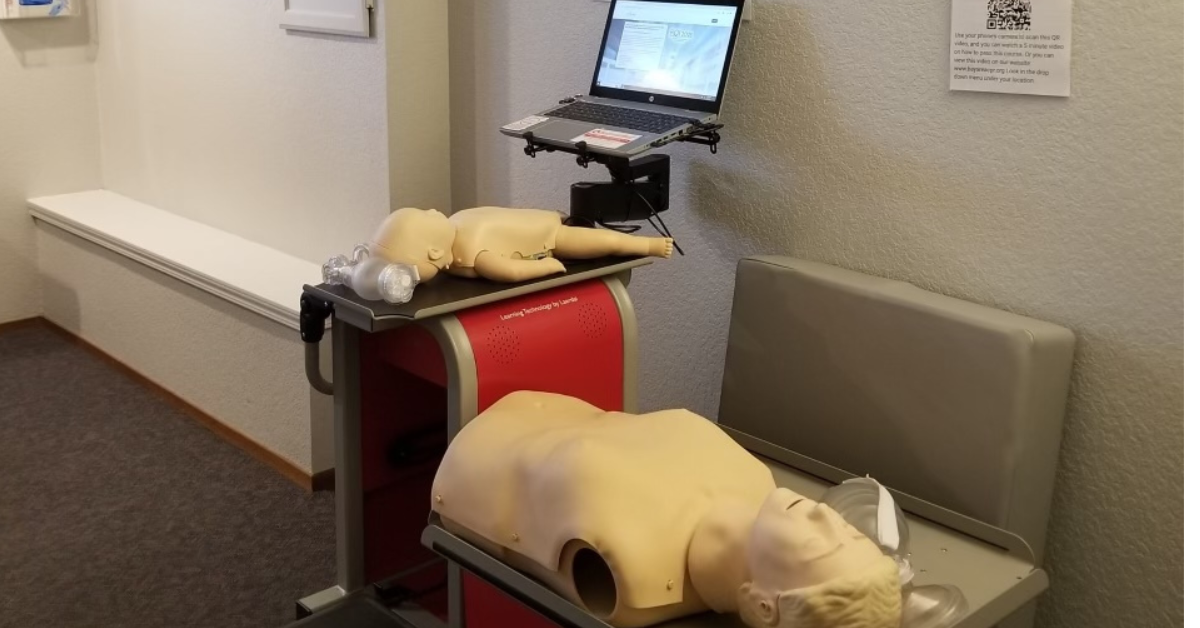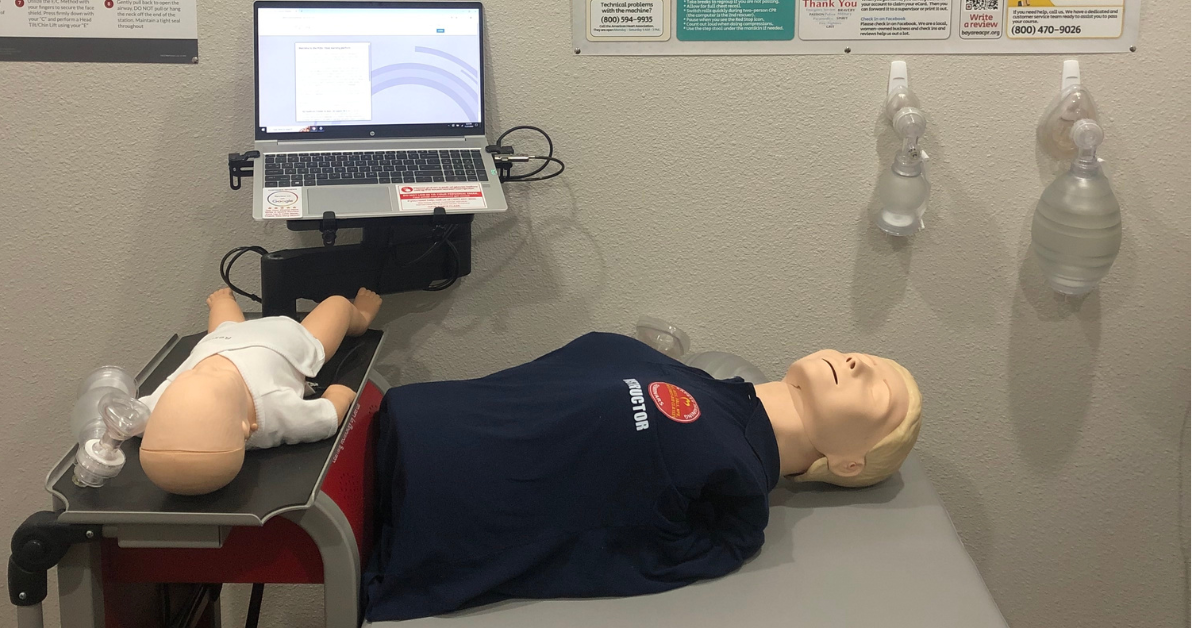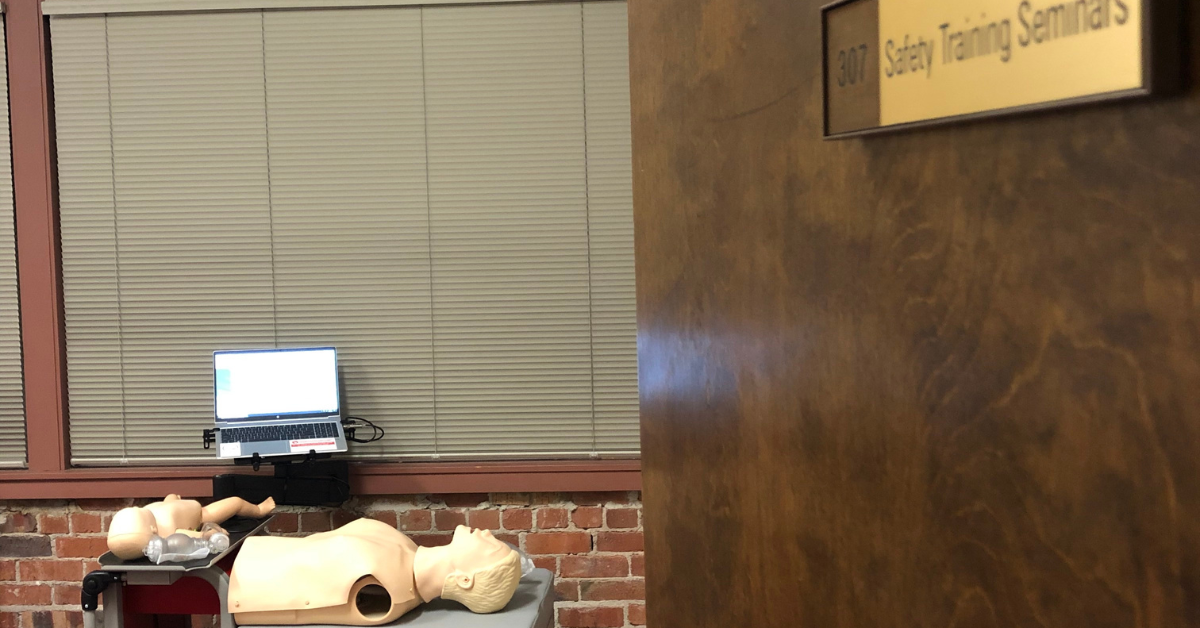School emergencies happen fast. A student collapses during PE class. A colleague has a heart attack in the hallway. Someone chokes in the cafeteria. These moments don’t wait for paramedics to arrive.
This is why we believe every teacher should know CPR. At Safety Training Seminars, we’ve seen firsthand how proper training transforms educators into lifesavers. When teachers have CPR skills, they can act decisively during those critical first minutes when every second counts.
This post will show you why CPR training is essential for teachers, how it benefits your entire school community, and what you can do to get certified today.
The Reality of School Medical Emergencies
Medical emergencies in schools are more common than most people realize. The American Heart Association reports that over 350,000 cardiac arrests occur outside of hospitals each year. Many of these happen in schools, workplaces, and other public spaces where teachers and staff are present.
Sudden cardiac arrest can affect anyone at any age. Students with undiagnosed heart conditions, staff members under stress, and visitors to your school can all experience life-threatening emergencies. When this happens, the first few minutes are crucial.
Brain death begins within 4-6 minutes without oxygen. Emergency medical services typically take 8-12 minutes to arrive. This gap creates a window where immediate CPR can mean the difference between life and death.
Why Every Teacher Needs CPR Training
Immediate Life-Saving Action
When someone experiences cardiac arrest, their heart stops pumping blood effectively. Without intervention, they will die within minutes. CPR keeps blood flowing to vital organs until professional help arrives.
Teachers trained in CPR can immediately begin chest compressions and rescue breaths. This action keeps oxygen moving through the victim’s body, dramatically improving their chances of survival. Studies show that immediate CPR can double or triple survival rates.
Enhanced Emergency Response
CPR training teaches teachers to recognize the signs of cardiac arrest and other medical emergencies. You’ll learn to check for responsiveness, assess breathing, and determine when to start compressions. This knowledge helps you respond quickly and appropriately.
The training also covers how to use an automated external defibrillator (AED). These devices can restore normal heart rhythm during cardiac arrest. Many schools now have AEDs on campus, making this skill invaluable.
Increased Confidence and Preparedness
Medical emergencies create panic. People freeze, unsure of what to do. CPR training eliminates this uncertainty. When you know exactly what steps to take, you can respond with confidence.
This confidence reduces anxiety for both you and your students. A calm, prepared teacher creates a safer environment for everyone. Students feel more secure knowing their teacher can handle emergencies.
Positive Role Modeling
Teachers who are CPR certified inspire their students to learn these skills too. You become a role model for safety and preparedness. This influence can spread throughout your school community.
Many schools now include CPR training in their health curriculum. Having trained teachers makes these programs more effective. Students learn better when they see their teachers value and practice these skills.
How CPR Training Benefits Your School Community
Creating a Safer Environment
When multiple teachers know CPR, your school becomes significantly safer. More trained responders mean faster response times and better outcomes during emergencies.
This safety extends beyond cardiac arrest. CPR training often includes first aid skills for choking, bleeding, and other common emergencies. These skills help teachers handle a wide range of situations.
Reducing Liability and Meeting Standards
Many states require schools to have staff trained in CPR and first aid. Even where it’s not legally required, having trained personnel reduces liability and demonstrates your school’s commitment to safety.
School boards and administrators increasingly expect teachers to have emergency response training. Getting certified shows your professionalism and dedication to student welfare.
Building Community Confidence
Parents want to know their children are safe at school. When families learn that teachers are CPR certified, it builds trust and confidence in your school. This positive perception can improve parent-school relationships and community support.
Fostering a Culture of Safety
CPR training promotes a culture where safety is everyone’s responsibility. Teachers who get certified often encourage colleagues to do the same. This creates a school-wide commitment to emergency preparedness.
What CPR Training Covers for Teachers
Basic Life Support Skills
CPR training teaches you how to perform chest compressions on adults, children, and infants. You’ll learn proper hand placement, compression depth, and the correct rate of compressions.
The training covers rescue breathing techniques and how to combine compressions with breaths effectively. You’ll practice these skills on mannequins until they become second nature.
AED Operation
Most CPR courses include training on automated external defibrillators. You’ll learn how to attach the pads, follow voice prompts, and deliver shocks safely. AEDs are designed to be user-friendly, but proper training ensures effective use.
Choking Response
Choking is common in schools, especially among younger students. CPR training teaches you how to perform the Heimlich maneuver on conscious victims and how to provide care if they become unconscious.
Team Coordination
School emergencies often require multiple responders. CPR training teaches you how to work effectively with other staff members, assign roles, and coordinate care until professional help arrives.
Getting Your CPR Certification
Choose the Right Course
For teachers, we recommend American Heart Association Heartsaver CPR and First Aid certification. This course covers CPR for all age groups, AED use, and basic first aid skills. The certification is valid for two years.
At Safety Training Seminars, we offer both individual and group classes. Our Heartsaver course combines 1-2 hours of online learning with 30-45 minutes of hands-on skills testing. You’ll receive your American Heart Association card the same day.
Group Training Benefits
Many schools prefer group training for their staff. We offer special group discounts and can bring our instructors directly to your school. This approach is cost-effective and convenient for busy educators.
Group training also builds team cohesion. When teachers learn together, they develop shared protocols and confidence in working as a team during emergencies.
Flexible Scheduling
We understand that teachers have demanding schedules. That’s why we offer classes every day of the week, including evenings and weekends. Our 70+ locations throughout California make it easy to find a convenient class time and location.
Maintaining Your Skills
Regular Practice
CPR skills fade without practice. We recommend reviewing your techniques regularly and taking refresher courses as needed. Many teachers find it helpful to practice with colleagues or during professional development days.
Stay Current
CPR guidelines change periodically as new research emerges. Make sure your training stays current by recertifying every two years. This ensures you’re using the most effective techniques.
Expand Your Knowledge
Consider advancing your skills with additional training. First aid certification, mental health first aid, and pediatric-specific courses can enhance your ability to respond to various emergencies.
Common Concerns About CPR Training
“I’m Not Strong Enough”
Many teachers worry they lack the physical strength for effective CPR. The truth is, proper technique matters more than strength. Our instructors teach you how to use your body weight effectively and maintain compressions without exhausting yourself.
“What If I Do Something Wrong?”
Good Samaritan laws protect people who provide emergency care in good faith. You cannot be sued for trying to help someone in a life-threatening situation. The only real mistake is doing nothing.
“I Don’t Have Time”
CPR certification takes just a few hours total. Compare this to the lifelong impact of saving someone’s life. Most teachers find the time investment minimal compared to the confidence and skills they gain.
The Cost of Not Being Trained
Consider what happens when teachers aren’t CPR trained. During emergencies, precious minutes tick by while waiting for help. These delays can mean the difference between a complete recovery and permanent disability or death.
The emotional toll on teachers who feel helpless during emergencies is significant. Many report feeling guilty and unprepared. CPR training eliminates these feelings and empowers you to take meaningful action.
Real-World Impact
Teachers across the country have used CPR training to save lives. A high school teacher in Texas used CPR to revive a student who collapsed during a basketball game. An elementary teacher in Ohio saved a colleague who had a heart attack during lunch duty.
These stories aren’t rare exceptions. They represent the real impact of CPR training in schools. Every teacher who gets certified increases the chances that someone will survive a medical emergency.
Taking Action for Your School Community
The question isn’t whether medical emergencies will happen at your school. The question is whether you’ll be prepared when they do. CPR training gives you the tools to act decisively and effectively.
At Safety Training Seminars, we’ve been training educators since 1989. We’re an official American Heart Association Training Center with over 19,000 five-star reviews. Our courses are designed specifically for busy professionals who need quality training that fits their schedule.
We offer group discounts for schools and can bring training directly to your campus. Our instructors are experienced, patient, and focused on helping you succeed. With our 100% pass rate guarantee, you can be confident you’ll leave certified and prepared.
Don’t wait for an emergency to wish you had these skills. Take action today to protect your students, colleagues, and school community. Contact us to schedule your CPR training and join the thousands of teachers who are prepared to save lives.
Your students depend on you for more than just education. They count on you to keep them safe. CPR certification ensures you’re ready for that responsibility.
Whether you’re new to CPR or due for recertification, finding a convenient training location can make all the difference. With accessible options like BLS CPR Classes in Fremont and BLS CPR Classes in Elk Grove, it’s easy to get high-quality instruction that aligns with AHA standards—helping you stay prepared to act in critical moments.



